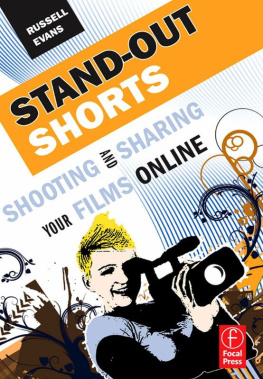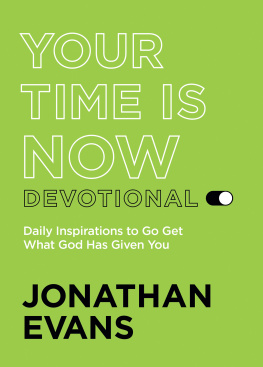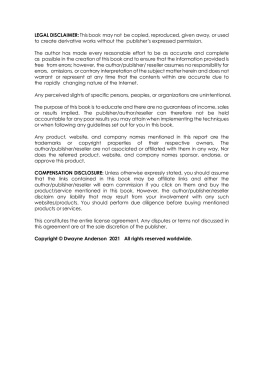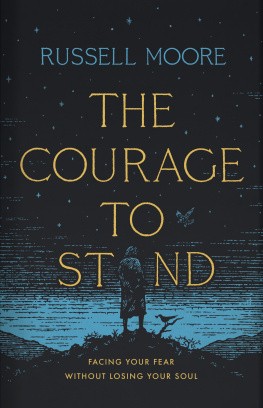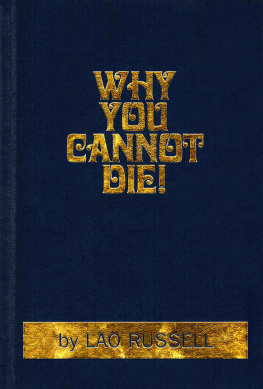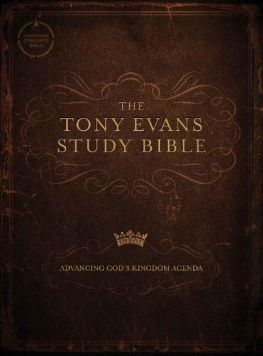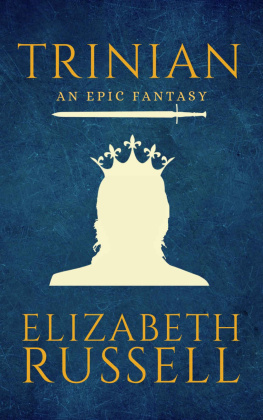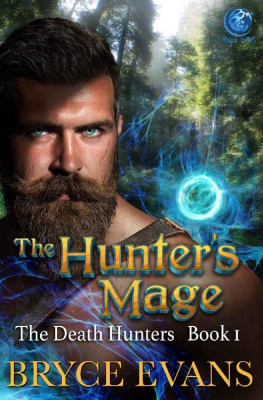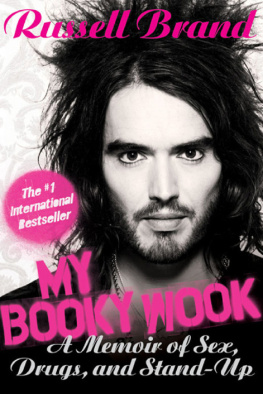Russell Evans - Stand-Out Shorts
Here you can read online Russell Evans - Stand-Out Shorts full text of the book (entire story) in english for free. Download pdf and epub, get meaning, cover and reviews about this ebook. year: 2012, publisher: Taylor and Francis;Focal Press, genre: Home and family. Description of the work, (preface) as well as reviews are available. Best literature library LitArk.com created for fans of good reading and offers a wide selection of genres:
Romance novel
Science fiction
Adventure
Detective
Science
History
Home and family
Prose
Art
Politics
Computer
Non-fiction
Religion
Business
Children
Humor
Choose a favorite category and find really read worthwhile books. Enjoy immersion in the world of imagination, feel the emotions of the characters or learn something new for yourself, make an fascinating discovery.
- Book:Stand-Out Shorts
- Author:
- Publisher:Taylor and Francis;Focal Press
- Genre:
- Year:2012
- Rating:3 / 5
- Favourites:Add to favourites
- Your mark:
- 60
- 1
- 2
- 3
- 4
- 5
Stand-Out Shorts: summary, description and annotation
We offer to read an annotation, description, summary or preface (depends on what the author of the book "Stand-Out Shorts" wrote himself). If you haven't found the necessary information about the book — write in the comments, we will try to find it.
Stand-Out Shorts — read online for free the complete book (whole text) full work
Below is the text of the book, divided by pages. System saving the place of the last page read, allows you to conveniently read the book "Stand-Out Shorts" online for free, without having to search again every time where you left off. Put a bookmark, and you can go to the page where you finished reading at any time.
Font size:
Interval:
Bookmark:


Focal Press is an imprint of Elsevier
30 Corporate Drive, Suite 400, Burlington, MA 01803, USA
The Boulevard, Langford Lane, Kidlington, Oxford, OX5 1GB, UK
2010 Elsevier Inc. All rights reserved.
No part of this publication may be reproduced or transmitted in any form or by any means, electronic or mechanical, including photocopying, recording, or any information storage and retrieval system, without permission in writing from the publisher. Details on how to seek permission, further information about the Publishers permissions policies and our arrangements with organizations such as the Copyright Clearance Center and the Copyright Licensing Agency, can be found at our website: www.elsevier.com/permissions.
This book and the individual contributions contained in it are protected under copyright by the Publisher (other than as may be noted herein).
Notices
Knowledge and best practice in this field are constantly changing. As new research and experience broaden our understanding, changes in research methods, professional practices, or medical treatment may become necessary.
Practitioners and researchers must always rely on their own experience and knowledge in evaluating and using any information, methods, compounds, or experiments described herein. In using such information or methods they should be mindful of their own safety and the safety of others, including parties for whom they have a professional responsibility.
To the fullest extent of the law, neither the Publisher nor the authors, contributors, or editors, assume any liability for any injury and/or damage to persons or property as a matter of products liability, negligence or otherwise, or from any use or operation of any methods, products, instructions, or ideas contained in the material herein.
Library of Congress Cataloging-in-Publication Data
Application submitted
British Library Cataloguing-in-Publication Data
A catalogue record for this book is available from the British Library.
ISBN: 978-0-240-81210-6
For information on all Focal Press publications visit our website at www.elsevierdirect.com
Printed in the United States of America
10 11 12 13 5 4 3 2 1

For more content such as additional chapters and interviews please visit the companion site at: http://booksite focalpress com/companion/Evans/stand-out/
Register using the passcode: shorts106
When George Lucas car hit a walnut tree just after his eighteenth birthday he thought maybe he should do something with his life after all. His Fiat Bianchina left the track, he was thrown clear, and the walnut tree was shifted three feet by the impact.
What happened that June 12th 1962 changed the course of the future directors life forever, a sudden jolt that threw him out of his small-town life and into a whole new direction. And its kind of like what happened to filmmakers when affordable digital video arrived. One minute you know where you are headed along a familiar and well-worn road and the next youre traveling at high speed through the air into the middle of a wide open plain. No more slow road, no more road markings and no landmarks. DV meant that you could cut to the chase, pick up your camera, no cash needed, and make that movie. Then show it around the world. Suddenly the horizon was wide open, and that old slow road looked very slow indeed.
So, if thats what todays filmmakers have at their disposal, how is it being used? Is everyone making digital masterpieces? Not quite. Some just drive round in circles with their new-found DV tools. Like any new territory, most people dont really know where to go and after a while start to long for the old certain places to go, even if it was slower traveling that way.
But you know that whatever technology you use, you still need passion and soul to make any movie. The biggest asset you have is your own unique way of seeing the world, and the more your films get shared on the web, the more you find other people who see things your way.
There are a lot of people who have made this book possible, from the many film students Ive worked with, to the filmmakers around the world who have taken time to tell me how they work and part with their hard-won tips for every aspect of making a movie. People who make films tend to be extremely generous with their time, maybe aware of how tough it was for them when they were starting out, and they responded to the request to tell what they have learned with enthusiasm. Some of them are film students themselves, others famous directors such as Nick Broomfield, but they all had the same positive response when I asked them to share their practical experiences.
A big thank you to: Preston Randolph; Nick Broomfield; Kerry David; Ben Rutkowski; Ben Winter; Derek Flagge; Gary Teperman; Nick Cox in LA; R. Gesualdo in Florida; Walter Murch; Elliot Grove; Anne Aghion; the talented Chance Brothers, Richard and John; Jason Korsner; Oscar Knott; Armen Antranikian; Blanca Escoda; Ryan Bilsborrow-Koo; Elliot Bristow; Lee Philips; Kevin Powis; Til Mustapha; Mohamed Al-Daradji; Ashvin Kumar; Dewi Griffiths; Stacey Harrison; Ray Gower; Catbus; Neville Steenson; Gus Berger. And to Gavin Evans for knowing all the good movies.
Thank you to Focal Press, and in particular Elinor Actipis for relentlessly pursuing this project with me over the last few years. Thanks for your belief! Also, editor Chris Simpson has been calm, patient and always on the end of the phone to gradually guide the project through. Thanks are due also to my editors on the several filmmaking magazines I worked on over the years, particularly Practical DV, for sending me great ideas to work on, some of which inspired a few chapters in this book.
Finally, a big thank you to Wendy Klein, for your constant support and inspired ideas, and to Esme, Zoe and Alfie just for being around.
This book says that making movies is no different from any other creative work you really can just pick up a camera and start to create something, just like you do with music, dancing or acting. You dont wait to be told youre good enough, you just do it. And you dont have to do things the right way, you just have to do it your way. Use this book to find out what works for most people, then go ahead and add your own ideas.
The big advances we look back on as the greatest moments in the movies have only come about by people rejecting the right way and instead doing it their way: special effects were invented by director Georges Mlis messing around with cameras and doing what cameras werent supposed to do; the great Russian editors invention of montage trashed every editing idea; and a 24-year old Orson Welles knew almost nothing about filmmaking except what he saw in his head, ending up with what was the number 1 critics movie for half a century.
You dont have to read a dozen heavy manuals on making films, or go to film school, or be a genius director. Just find out the essential knowledge you need and start.
Font size:
Interval:
Bookmark:
Similar books «Stand-Out Shorts»
Look at similar books to Stand-Out Shorts. We have selected literature similar in name and meaning in the hope of providing readers with more options to find new, interesting, not yet read works.
Discussion, reviews of the book Stand-Out Shorts and just readers' own opinions. Leave your comments, write what you think about the work, its meaning or the main characters. Specify what exactly you liked and what you didn't like, and why you think so.

